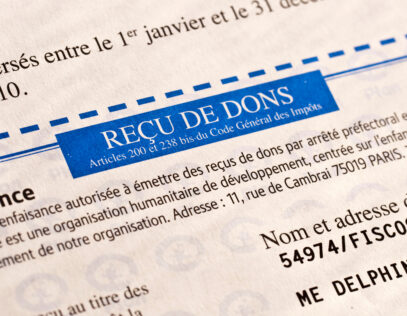The foundation of transfer pricing is, of course, the arm’s length principle (ALP), or fair market value. In terms of transfer pricing, the ALP mandates that the price charged in a transaction between related parties must be aligned with the price charged in a “comparable” transaction between unrelated parties.
Proving arm’s length pricing rests almost entirely on a comprehensive and reliable comparability analysis.
Finding transactions that qualify as comparable is the start of your comparability analysis. This requires first and foremost a thorough understanding of your controlled transaction (i.e., the transaction between related parties), which is arrived at by “delineation”—examining the commercial and financial relations between the related parties, as well as the specific features of the controlled transaction.
Once the transaction is delineated (and thereby clearly understood), reliable comparables can be identified and applied.
Here we provide a step-by-step overview of each phase of the comparability analysis: From delineating the transaction, through choosing comparables and selecting the transfer pricing method to arrive at an arm’s length range of prices for a transaction between related parties.
“Proving arm’s length pricing, of course, rests almost entirely on a comprehensive and reliable comparability analysis.”
Consider the Economically Significant Characteristics
Delineating a transaction starts with determining the economically significant characteristics of both the controlled transaction and the taxpayer’s industry. An “economically significant characteristic” is any factor that might affect the pricing of the transaction.
Begin by understanding your business in a big-picture sense. This includes identifying the industry you operate in, your role within that industry (e.g., producer, distributor), the market you serve, and your share of that market.
Once your business operations and activities are identified, move on to analyzing the specific transaction at issue. Note that the economically significant characteristics of a transaction will vary depending on the type of property or service being transferred:
- Tangible property: physical features, quality and reliability, and availability and volume of supply.
- Intangible property: form, type, duration and degree of protection, and anticipated benefits.
- Provision of services: nature and extent of services provided.
- Financial transactions: form, type, duration, and benefits of the transactions.
Keep Your FAR Close
The functional analysis, or FAR analysis, as it’s known, identifies the functions, assets, and risks that each entity contributes to a related-party transaction. By identifying the role and risk assumed by each entity in a given transaction, the functional analysis will help you characterize the business, so it complies with business models defined by tax authorities.
Is this entity a limited-risk distributor? A sales agent? A full-fledged manufacturer? Identifying this information will help you identify comparables and the most appropriate transfer pricing method to apply to the transaction. Consider this the foundation of your transfer pricing documentation.
Functions performed might include R&D, product design, manufacturing, production and process engineering, design work, transportation, marketing, advertising, publicity, and intragroup services (management, legal, accounting, training, consulting, etc.).
To assess the assets employed, identify significant assets used or transferred in the controlled transaction. These transfers could include both tangible assets and intangible assets.
To identify significant risks assumed in a transaction, assess the core functions, key responsibilities, key decisions, and level of responsibilities taken by each party. Types of risk to consider include financial, product, market, collection, and entrepreneurial.
“By identifying the role of each entity in a given transaction, the functional analysis will help you identify comparables and the most appropriate transfer pricing method to apply.”
Put Contractual Terms and Economic Circumstances Under the Microscope
If your transaction is contractual, be sure to understand the agreed terms and conditions. With related parties, however, the terms of an agreement may be specified in less formal communications (though that’s not recommended).
And where a contract with specific terms does exist, know that related parties might not hold each other strictly to its terms. In these instances, substance over form, including the conduct of the parties, must be compared to the terms and conditions of the contract.
The economic circumstances of the transaction are important to note, as well. To assess how this factor will affect comparability, take into account global economic trends, what’s happening in the relevant industry, and how the local markets are faring.
When determining market comparability, consider geographic location, market size, competition, purchasing power, availability of substitute goods, supply and demand, government regulations, and transportation expenses, etc.
Select Your Tested Party
Having examined the economically significant characteristics, conducted a functional analysis, and considered contracts, context, and business strategy, your controlled transaction is now delineated. The next step in a comparability analysis is comparing that controlled transaction with uncontrolled transactions.
This process involves several steps of its own, including a selection of the “tested party,” identifying potential comparable transactions, database screening, and making comparability adjustments. Ideally, these steps will help you arrive at reliable, local, and timely comparables.
Unfortunately, the limitations of available data often make this goal unattainable. But despair not, there are other avenues to explore.
The tested party in a controlled transaction is the party to which the transfer pricing method is applied. The choice of the tested party should be derived from the functional analysis of the transaction.
In general, this is the least complicated entity and the one for which the most reliable comparables can be found. The tested party can be either the local or the foreign party.
Search for Reliable Benchmarks
Uncontrolled transactions (i.e., transactions between unrelated parties) are used as comparables, of which there are two types:
- Internal comparables: Also known as internal comparable uncontrolled prices (CUPs), this type of comparable is one that’s part of a transaction between a related party and an independent party.
- Third-party/external comparables: two independent parties, neither of which is a party to the controlled transaction.
Internal comparables, when available, are easier to find and are potentially more reliable as the multinational enterprise (MNE) has access to information that’s more complete. They are also likely to be less costly to document.
(Of course, as the OECD warns, if there are significant differences in volume, internal comparables may not always be the most reliable comparisons.) If the internal comparable is reliable there is no need to perform a database search for third-party comparables.
In practice, however, the application of the arm’s length principle is often heavily reliant on external comparables.
Comparability searches typically start with commercial databases. Start by screening the data for comparables based on industry classification and business description.
Then use the databases to narrow your results both quantitatively and qualitatively. Commercial databases, however, present challenges to taxpayers and tax administrators alike: The data may be expensive and/or difficult to access. The breadth of coverage often underwhelms as information on local economic operators can be hard to come by.
And the databases are generally not designed with transfer pricing in mind, limiting their usefulness. Database screening typically starts with broad categories like industry and geography and narrows from there.
This initial database screen creates a pool of potential comparables to be filtered further both quantitatively and qualitatively. Commonly applied primary database screening factors include:
- Industry codes
- Geographical locations
- Keywords related to the business activity
- Level of market share
- Scale of operations
- Independence
- Active/inactive companies
- Financial disclosures
- Relevant period
- Diagnostic ratio
In the second phase of your quantitative work, you’ll screen by financial metrics. Comparables may be filtered out based on data points such as operating losses, R&D costs, or capital expenditure.
After your quantitative work is done, your next step is the qualitative screen. Here you’ll review the detailed business functions performed by the potential comparables, weeding out those with inapplicable functions.
The gold standard of comparables is, of course, contemporaneous transactions and similar conditions. Lacking these, however, historic information may be employed. But be sure to adjust when economic circumstances differ significantly from your own situation.
Are Local Comparables Necessary?
Searching databases by geography will help locate local comparables, which are generally preferred—and sometimes required—but often hard to find.
If local comparables are unavailable, foreign comparables may suffice, but these will require careful consideration of market differences between geographies, as well as proof that you made a diligent effort to find local comparables.
“Local comparables are generally preferred—and sometimes required—but often hard to find.”
In Japan, for example, local comparables are required if the tested party is Japanese. In Thailand, local comparables are strongly preferred—if you don’t have them, you’ll be expected to prove they are not available or that foreign comparables are more reliable. India strongly prefers local comparables (acceptance of foreign comparables is highly litigative).
So, try first to find comparables from the local market. Failing that, comparables from other markets are usually acceptable, with some exceptions.
When using foreign comparables, however, be aware that no specific guidance is available on how to assess the differences in economic conditions between markets.
When in doubt, keep things as close as possible: Start with regional comparables—Nordic, Iberian, Pan-Asian, Pan-European, or antipodean—before moving on to foreign comparables. If you are struggling with Finland comparables, check Sweden before Switzerland. Pan-European or pan-Asian comparables are a last resort.
Whichever non-local comparables you settle on, you may help your cause by making risk adjustments for differences in country conditions. But be aware that different approaches are followed for these adjustments around the world.
Australia avoids these adjustments, for example; Mexico considers adjustments when using Canadian and U.S. geographies; Colombia makes no adjustments when using Canadian and U.S. geographies; Mexico sometimes allows comparables from similar economies, such as India and Malaysia, without any adjustments.
Comparability Adjustments
Comparability adjustments are made to comparable data to improve accuracy and reliability. Whether comparability adjustments, such as working capital adjustments, should be performed in a particular case is a matter of judgment that should be evaluated, taking into account the costs and compliance burden involved.
Consider making adjustments where they can be expected to increase the reliability of the results. Too many adjustments, however, or adjustments that greatly affect the outcome, may be a red flag to auditors: an indication that the transactions being adjusted are not sufficiently comparable.
“Too many adjustments, however, or adjustments that greatly affect the outcome, may be a red flag to auditors.”
There is neither a universally accepted method for adjustments nor a consensus among tax administrations about the reliability of the adjustments. Many countries prefer adjustments but are nonetheless concerned about the reliability of the comparison.
For example, South Africa and Australia focus more on qualitative analysis rather than applying mechanical comparability adjustments.
Selecting the “Most Appropriate” Method
With comparables in hand, your next task is picking out the transfer pricing method to employ.
The OECD (Organization of Economic Co-operation and Development) recommends using the most appropriate method. (The U.S. has essentially adopted the same premise, but the IRS refers to it as “the best method rule.”) There are two types of transfer pricing methods: the traditional transactional methods and the profit-based methods.
Consider the following factors when selecting the most appropriate method:
- Strengths and weaknesses of the method.
- Appropriateness of the method in light of the nature of the controlled transaction (based on the characterizations determined in a functional analysis).
- Availability of reliable information (especially for external comparables).
- Degree of comparability between the controlled and uncontrolled transactions (including the reliability of comparability adjustments needed).
Arm’s Length Range
Tax authorities will want to see a range of data comparable to the tested party—your arm’s length range. The methods you’ve chosen will help ensure that your pricing is in line with what third parties would use. But however diligent you’ve been, comparables will always be somewhat lacking in precision.
Nuanced differences in functional comparability, geography, or sector make comparability an inexact science. Tax authorities therefore prefer to see an arm’s length range.
And that range is often narrowed further with an interquartile calculation. Details will differ by jurisdiction, but an interquartile range (IQR) often defines the arm’s length range. But, as noted, the more adjustments you make, the more vulnerable your arm’s length range may be.
If you have reliable comparables, however, and your analysis uses the most appropriate transfer pricing method, then you should sleep easy at night.
The ExacteraTakeaway: Comparability is the Foundation of Transfer Pricing
- Comparability analysis is an essential step in any transfer pricing analysis.
- The goal is to understand the economically significant characteristics of a controlled transaction and the respective roles of each party.
- It is a multi-step process that requires an assessment of many factors, including differing country practices and the varying availability of data.
- The need for a reliable comparability analysis must be balanced with a pragmatic approach and realistic expectations.








